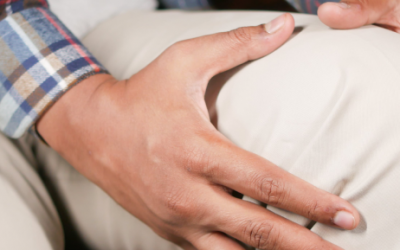It is estimated that more than half of all women will experience some sort of back pain during their pregnancy. Such pain is commonly caused due to postural and hormonal changes that the female body goes through during pregnancy.
In a healthy pregnancy, women typically gain between 11 and 15 kilograms, thus the spine has to adapt in a new position due to the change in the centre of gravity and the necessity to support extra weight. Sometimes this is enough to trigger pain in the lower lumbar region.
The pelvis loses some of its stability due to the effect of a hormone named relaxin on the ligaments. As the ligaments become loose as a way of preparing the body for labour, the surrounding muscles have to work harder in order to compensate for the stability lost. This may worsen the pain. Another factor which can cause tension in the low back is emotional stress.
For those who are interested in research, below there is a study published in The Journal of the American Osteopathic Association, which found that standard osteopathic treatment improved quality of life for postpartum women experiencing pregnancy-related low back pain. Osteopathy can help!

CHICAGO—June 30, 2015— German researchers found osteopathic manipulative therapy (OMTh) decreased postpartum low back pain by over 70 percent in women who had given birth at least three months before beginning treatment, according to a new study published in July issue of The Journal of the American Osteopathic Association (JAOA).
The eight week study, devised as a pragmatic randomized controlled trial, surveyed 80 women experiencing low back pain three to 15 months postpartum. Women in the study group received four OMTh treatments at two week intervals. Participants in the control group did not receive OMTh and were not allowed to receive any additional pain relief treatment, such as medication or therapy.
On average, those who received OMTh reported a 73 percent decrease in pain, compared to only seven percent in the control group. Pain was assessed by a 10-point Visual Analogue Scale and functional disability as measured by the Oswestry Disability Index.
“Women who’ve recently given birth are rarely studied beyond screening for postpartum depression and delivery complications, even though it’s well documented that low back pain is a common issue that hinders their quality of life during an already stressful time,” said Jennifer Caudle, DO, assistant professor of family medicine at Rowan University School of Osteopathic Medicine. “This study shows that osteopathic manipulative therapy can relieve their pain without medication that could be passed to a breastfeeding infant.”
In the United States osteopathic physicians, or DOs, receive additional training in diagnosing, treating and preventing illness or injury with osteopathic manipulative treatment (OMT). These fully licensed physicians move muscles and joints using osteopathic techniques that include stretching, gentle pressure and resistance. When appropriate, OMT can complement or replace drugs or surgery, bringing an extra dimension to standard medical care.
Source:



